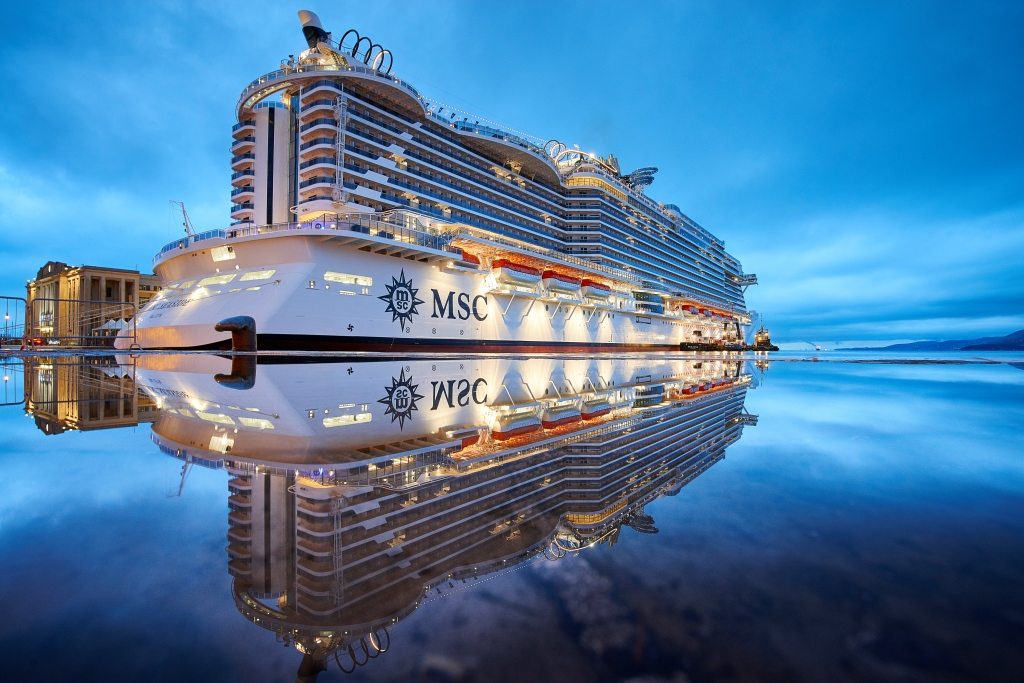Skift Take
As MSC Cruises embarks on a rapid global expansion, it makes sense for the privately owned operator to focus on the popular Caribbean cruise market. The key will be figuring out the best way to make its products stand out in a field crowded with names that are far more familiar to North American consumers.
MSC Cruises welcomed its latest ship Thursday night in Miami with all the pomp reserved for a nearly $750 million addition: Ricky Martin and Andrea Bocelli performed, legendary quarterback Dan Marino said a few words, and Sophia Loren served as godmother.
What was different for the privately owned European cruise line was the geography. MSC Seaside became the first vessel that the fast-growing company launched in the United States. And as the company moves forward with a plan to spend more than $12 billion on 12 new ships by 2026 — including the two delivered this year — it will need to gain a stronger foothold with North Americans.
“This is no longer, for us, a potential market,” said Gianni Onorato, CEO of MSC Cruises, at the naming ceremony. “This is a top priority.”
North America, the world’s top source market for cruise passengers, has long been in the sights of MSC. The operator sails mostly in Europe, but is also a major player in South America and South Africa.
Since late 2015, the line has based one ship, MSC Divina, in Miami; it sailed seasonally from the port for a couple years before that. Seaside, which carries 4,132 passengers at double occupancy, will sail from the port year-round while Divina will return to a seasonal deployment. And in 2019, a third ship will enter the market — the larger MSC Meraviglia, which also entered service this year. By 2026, the line will have 26 vessels, tripling its capacity in less than 10 years.
“The goal is to become an even bigger global player,” said chief communications officer Luca Biondolillo earlier this month. “In the U.S., we’ve gone through sort of phase one of our presence here, which has gone from having a seasonal ship to having a ship home port in Miami year-round. Now we’re moving into phase two, which will see as many as three ships based in North America.”
While North America — and especially the Caribbean — is an attractive market for expansion, it is also full of established cruise lines. Carnival Corp., Royal Caribbean Cruises, and Norwegian Cruise Line Holdings are all based in South Florida and have a significant presence in the region’s ports.
Onorato acknowledged the challenge for a lesser-known brand.
“Obviously this is a competitive market,” he said. “It will be very important that we are able to clearly list the differences of our product and why North American customers should also try an MSC Cruise instead of another cruise.”
With its newest ship, that difference is visible in the design. The rear, or aft, resembles a beach condo more than a ship, with a pool and deck stationed closer to the ocean than is typical. There are also two pools on upper decks, as well as winding water slides and lengthy zip lines.
“Seaside is bringing to the Caribbean a different revolutionary cruise model,” Biondolillo said. “She is a ship that has an enormous amount of outdoor space, she’s been designed to operate in warm seas, she’s been designed for the Caribbean, designed for people to enjoy being at sea.”
The Daily Newsletter
Our daily coverage of the global travel industry. Written by editors and analysts from across Skift’s brands.
Have a confidential tip for Skift? Get in touch
Tags: caribbean, cruising, msc cruises
Photo credit: MSC Seaside is pictured in Trieste, Italy. Switzerland-based parent company MSC Cruises launched the new ship Thursday in Miami as part of an expansion in North America. Mike Louagie / MSC Cruises
